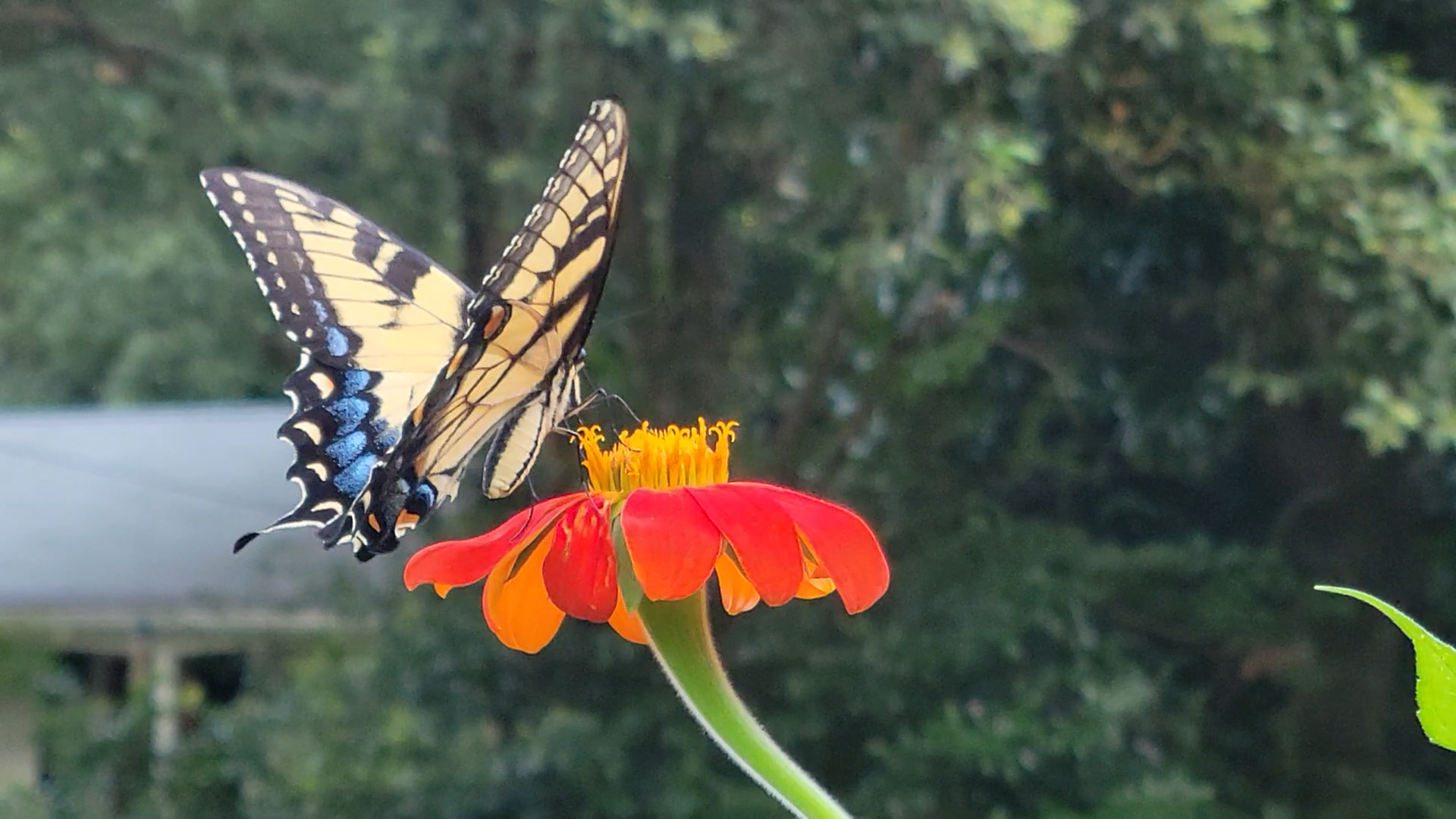Each year, the number of native species that use my tiny urban pollinator meadow increases, with many beneficial insect species reproducing there or spending their entire life cycle there.
All of these were filmed in my tiny yard (Yalobusha Farms) in August, 2024.
The first video is American Goldfinch (Spinus tristis) Feeding on Cutleaf Coneflower (Rudbeckia laciniata).
Cutleaf Coneflower is drought tolerant and can compete with tree roots. It can bloom as soon as the weather gets hot and bloom all summer long.
The second video is Thread-Waisted Wasp on Hoary Mountain Mint (Pycnanthemum incanum).
The Eastern Tiger Swallowtail lays its eggs on the leaves of trees of different species, such as the giant tulip poplar tree next door, The number of caterpillars is controlled by wasps of various types.
Thread-waisted wasps are parasitic and lay their eggs on the backs of caterpillars. It’s the cycle of life, Simba.
The next video is Georgia Native Pollinators on Mexican Sunflower (Tithonia rotundifolia) at Yalobusha Farms, Urban Ecological Oasis, August, 2024.
The Eastern Tiger Swallowtail LOVES Tithonia.
The next video is Large Rose Mallow Flowers Opening At Dawn at Yalobusha Farms, Urban Ecological Oasis, August, 2024.
There are many varieties of rose mallow, and this one has very large flowers. Hummingbirds fly all the way inside them hunting for insects and nectar.
Hummingbird moths are also fond of these.
This variety of swamp mallow is tall instead of bushy and falls over.
Wire tomato cages and stakes and small wire fences are helpful when growing this variety and other species of tall wildflowers close to a residence or walkway.
The next video is Eastern Tiger Swallowtail Butterflies (Papilio Glaucus).
Eastern Tiger Swallowtail Butterflies (Papilio Glaucus) demonstrate their fondness for Mexican Sunflowers (Tithonia rotundifolia) and Sulfur Cosmos (Cosmos sulphureus).
The next video is Eastern Black Swallowtail (Papilio polyxenes) With Damaged Left Wing.
This butterfly has a left wing that has been damaged by bird or other predator.
The bottom third of the left wing has been removed, and this allows the viewer to see the blue of the right wing.
I think the Black Swallowtails might be hunted by birds more aggressively than the yellow Tiger Swallowtails, but I see plenty damaged tigers as well.
